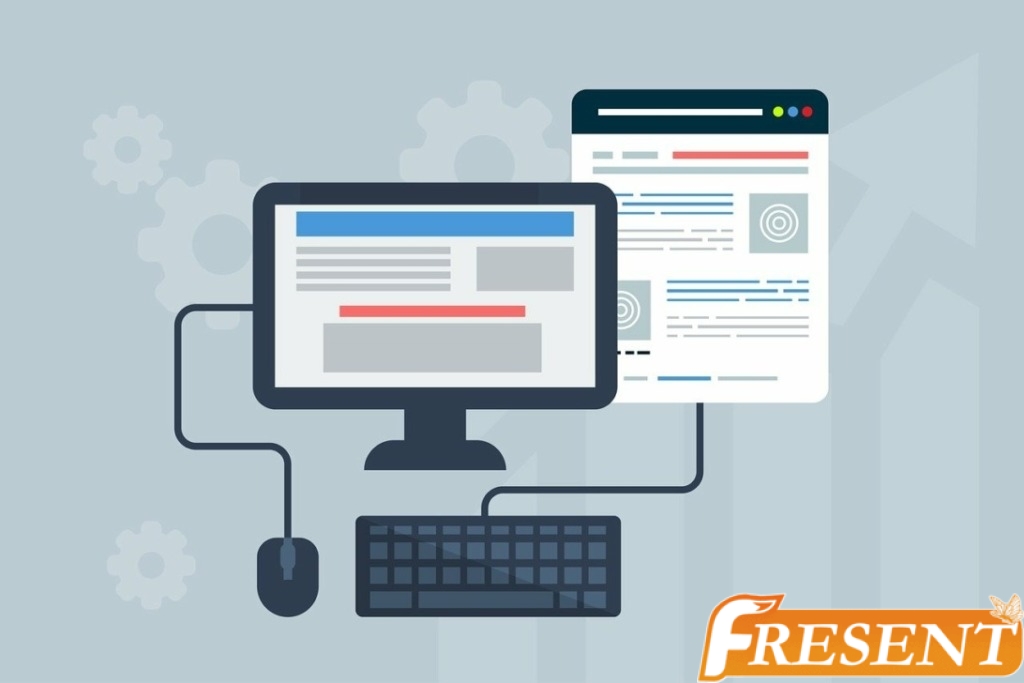You know what it’s like to use a piece of software that doesn’t quite fit your needs. It’s frustrating, time-consuming, and ultimately detrimental to your productivity. But what if there was a way for software companies to put their users first and design products that truly meet their needs? That’s where user-centric design comes in.
In this article, we’ll explore the power of user-centric design in SaaS (software as a service). By putting users at the center of the design process, SaaS companies can create products that are intuitive, efficient, and enjoyable to use. We’ll delve into the various stages of user-centered design, from conducting user research to designing user interfaces. Along the way, we’ll examine case studies of successful user-centered SaaS products and discuss some of the challenges involved in implementing this approach. Ultimately, we’ll show you how prioritizing your users can lead to happier customers, increased revenue, and a more successful business overall.
Understanding User-Centric Design
User-centric design is all about putting the needs and wants of users first. It involves adopting a design thinking approach, which seeks to understand user challenges, behaviors, and motivations. By taking this approach, designers can develop solutions that are tailored to specific user needs and preferences. To achieve this, they must develop a deep sense of empathy for their users.
Design thinking is an iterative process that involves prototyping, testing, and refining until the product meets user expectations. This means that designers must be willing to receive feedback from users throughout the development process. User empathy is also an essential element of user-centric design because it allows designers to put themselves in the shoes of their users. By doing so, they can better understand what drives them to use certain products or services.
In conclusion, understanding user-centric design requires adopting a human-centered approach that values empathy and data-driven decision-making. Designers who prioritize the needs and wants of their users are more likely to create products that resonate with their target audience. In the next section, we will explore how conducting user research can help you gain deeper insights into your target audience’s behavior and preferences.

Conducting User Research
To truly understand your target audience, it’s essential to conduct thorough research that takes into account their needs and preferences. There are several user research methods you can use to gather data and insights about your users. These include surveys, interviews, usability testing, and analytics.
Surveys can provide quantitative data about user demographics and behaviors. You can use them to ask specific questions that help you understand what users want from your product. Interviews are more qualitative in nature and involve one-on-one conversations with users to gain a deeper understanding of their needs and pain points.
Usability testing involves observing users as they interact with your product to identify areas for improvement. Analytics provide valuable information about how users navigate through your product, where they spend the most time, and where they drop off. Once you’ve gathered all this data, you’ll need to conduct user feedback analysis to identify common themes and patterns among your users’ responses. This will help you create user personas that accurately reflect the needs of your target audience.
When conducting user research, it’s important to keep the focus on your users at all times. Use empathy when interpreting their feedback and prioritize data-driven decision-making over personal opinions or assumptions. By doing so, you’ll be better equipped to create a product that meets the needs of your target audience. In the next section, we’ll discuss how to turn this research into actionable insights by creating user personas.
Creating User Personas
Crafting user personas is a crucial step in understanding the target audience and tailoring product design to their needs. Creating effective personas involves collecting data from various sources, such as customer feedback, surveys, and interviews. Use this information to create detailed profiles of your ideal users that include demographic information, job titles, goals and pain points.
Maximizing user engagement means designing products that are tailored to your target audience’s specific needs. By creating accurate user personas, you can gain a deeper understanding of what motivates your users and how they interact with your product. This knowledge allows you to develop features that not only meet their current needs but anticipate future ones as well.
To create effective user personas, it’s important to continuously update them with new data and insights. As your product evolves or market trends shift, so will the motivations of your users. Regularly reassessing and refining your personas will ensure that you remain focused on meeting their changing needs. Developing user scenarios based on these personas will help bring them to life and provide a clear path towards enhancing user experience within the context of real-life situations.
Developing User Scenarios
Get ready to immerse yourself in the user’s world by developing scenarios that evoke their emotions and needs. User scenario development is a crucial step in creating user-centric design. By putting yourself in your user’s shoes, you can better understand their motivations and pain points, leading to a more effective product.
To develop a user scenario, start with user journey mapping. This involves breaking down each step of the user’s experience with your product or service, from initial awareness to post-purchase follow-up. From there, you can identify areas where users may struggle or get frustrated and brainstorm solutions to improve their experience.
When developing scenarios, keep these four elements in mind: context (what situation is the user in), goals (what do they hope to achieve), actions (what steps will they take), and emotional response (how will they feel). By incorporating these elements into your scenarios, you can create a more vivid picture of your users’ experiences and design accordingly. After all, happy customers are loyal customers!
Now that you’ve developed realistic scenarios for your users’ experiences with your product/service, it’s time to move on to designing interfaces that meet their needs seamlessly.

Designing User Interfaces
Now it’s time to dive into creating interfaces that seamlessly meet the needs of your users. Designing user interfaces is not just about making them visually appealing, but also ensuring that they are accessible to everyone. This means incorporating inclusive design principles and considering accessibility features for users with disabilities.
When designing your user interface, it’s important to keep in mind the branding of your product or service. You want the interface to reflect your brand while still being intuitive and easy for users to navigate. Incorporating branding elements such as color schemes, typography, and logos can help make your interface stand out while maintaining consistency across all touchpoints.
By designing with accessibility and branding in mind, you can create a user-centric interface that enhances the overall experience for your users. But don’t stop there! Conducting usability testing is an essential step in ensuring that your design meets its objectives and addresses any pain points or confusion experienced by users.
Conducting Usability Testing
When it comes to designing user interfaces, your users should always be at the forefront of your mind. One of the most effective ways to ensure you’re creating an experience that truly meets their needs is by conducting usability testing. By gathering feedback through methods such as surveys, interviews, and observation, you can gain valuable insights into how users interact with your product and identify areas for improvement. Remember: the success of your SaaS depends on meeting the needs of your users first and foremost!
Importance of User Testing
You’ll see significant benefits when you prioritize user testing, as it helps ensure your SaaS product is meeting the needs and expectations of its users. Here are five reasons why user testing is crucial for the success of your SaaS product:
- It allows you to identify and address usability issues early on in development, saving time and money in the long run.
- Incorporating user feedback into the agile development process ensures that your product evolves in a way that aligns with user needs.
- User testing helps you understand how different types of users interact with your product, allowing you to tailor features and functionality accordingly.
- By involving users in the development process, you build trust and loyalty among them, increasing their likelihood to recommend your product to others.
- Gathering data from user testing provides objective insights that can inform decision-making around future updates and improvements.
With these benefits in mind, it’s clear that incorporating user testing into your development process should be a top priority. In order to do this effectively, it’s important to have methods for collecting feedback that are both efficient and meaningful.
Methods for Collecting Feedback
Make sure to collect feedback from your customers regularly, as this will help you create a product that truly meets their needs and desires. One way to incentivize feedback is by offering rewards such as discounts or exclusive access to new features. You can also implement real-time feedback through the use of chatbots or surveys embedded within your software.
Another effective method for collecting feedback is through user testing sessions. These sessions allow you to observe users interacting with your product and provide valuable insights into areas that need improvement. It’s important to listen carefully to their feedback and take action on their suggestions in order to continuously improve the user experience. With these methods in place, you can gather the necessary information needed for iterating and refining your SaaS product.
Iterating and Refining
Now that you’ve conducted usability testing and received valuable feedback from users, it’s time to delve into the process of iterating and refining your product. Continuous improvement is key in creating a user-centric SaaS experience. By taking user feedback into account and making necessary changes, you can ensure that your product meets the needs of your target audience. So don’t be afraid to iterate and refine – it’s all part of the journey towards creating a truly exceptional user experience.
Continuous Improvement Process
By consistently analyzing user feedback and implementing changes, you can ensure that your product is always evolving and meeting the needs of your customers through a continuous improvement process. Best practices for this process include creating a system to collect user feedback regularly, prioritizing the most pressing issues to address first, and setting clear goals for each iteration. When it comes to implementation challenges, it’s important to communicate changes clearly with users and make sure they understand why certain decisions were made.
Continuous improvement is not just about fixing bugs or adding new features; it’s about constantly striving to make your product better for your users. By taking a data-driven approach and putting users at the center of everything you do, you can build trust with your customers and create a product that truly meets their needs. This is where the importance of user feedback comes in – by listening closely to what your users are saying, you can gain valuable insights into how they use your product and what improvements they would like to see in the future.
Importance of User Feedback
Listening closely to feedback from customers is crucial for improving your product and meeting their needs in a constantly evolving market. Incorporating suggestions and reacting to criticism can lead to significant improvements in the user experience, ultimately driving customer satisfaction and loyalty. Here are some reasons why user feedback is essential:
- It helps you identify pain points: User feedback can highlight areas of your product that are causing frustration or confusion, allowing you to make targeted improvements that will have a positive impact on the overall user experience.
- It provides valuable insight: Users bring unique perspectives and insights that can help you understand how they use your product and what features are most important to them. This information can guide future development efforts, ensuring that you’re always building features that resonate with your target audience.
- It fosters trust and engagement: When users feel heard and valued, they’re more likely to become loyal customers who actively engage with your brand. By incorporating their feedback into your product roadmap, you demonstrate a commitment to meeting their needs and building a better product.
Incorporating user feedback into product development is an ongoing process that requires careful consideration of both qualitative and quantitative data. By analyzing user behavior, conducting surveys or interviews, and tracking metrics like retention rates or NPS scores, you can gain a deeper understanding of what users want from your product. From there, it’s up to you to prioritize feature requests based on business goals, technical feasibility, and other factors before implementing changes that will delight users and drive growth.

Incorporating User Feedback into Product Development
Imagine being able to create a product that not only meets the needs of your users, but exceeds their expectations by actively incorporating their feedback into your development process. Implementing user feedback is crucial for developing a successful product that caters to the needs of your users. By gathering feedback from different sources such as surveys, interviews or reviews, you can get insights on what works and what doesn’t work in your product.
Incorporating user needs is an ongoing process and should be considered at every stage of product development. This means that you need to iterate on previous versions based on user feedback and incorporate changes accordingly. By doing so, you are building a product that resonates with your audience and keeps them engaged with its features.
Your users are the ones who will ultimately decide whether or not your product is relevant to them. Incorporating their feedback ensures that they feel heard and valued while also helping you build a better product. Measuring user satisfaction through metrics such as Net Promoter Score (NPS) or Customer Satisfaction (CSAT) can help you track progress towards meeting user needs and expectations.
Measuring User Satisfaction
As a SaaS product developer, you want to ensure your users are satisfied with the experience your product provides. To do this, you need to measure user satisfaction using metrics for evaluating user experience. Analyzing user feedback is also crucial in understanding what works well and what needs improvement in your product. By taking a data-driven approach and putting the needs of your users first, you can create a better overall experience for them.
Metrics for Evaluating User Experience
Measuring the success of user experience can be done through metrics such as task completion rates and user satisfaction scores. When evaluating user experience, it is important to consider both quantitative and qualitative metrics. Quantitative metrics, such as task completion rates and time spent on a website or app, provide numerical data that can be easily measured and analyzed. Qualitative metrics, such as user feedback and observations, offer subjective insights into how users feel about their experience.
Balancing user needs with business goals is also essential when evaluating user experience. Metrics should not only reflect what users want and need but also align with the overall goals of the company. For example, while high task completion rates may indicate a positive user experience, they may not necessarily lead to increased revenue for the business. It is therefore important to consider both aspects when choosing which metrics to track.
Analyzing user feedback can provide valuable insights into areas where improvements can be made in order to enhance the overall user experience. By reviewing both quantitative and qualitative data, you can gain a comprehensive understanding of how users are interacting with your product or service and identify potential pain points or areas for improvement.
Analyzing User Feedback
To truly understand how your product or service is being received, you need to actively listen to the feedback of those who are using it. Analyzing user feedback is crucial in improving retention rates and identifying pain points that may be hindering user satisfaction. By gathering this information, you can make informed decisions on how to improve your product or service and ultimately provide a better experience for your users.
As you analyze user feedback, it’s important to not only focus on the negative comments but also the positive ones. Understanding what users enjoy about your product/service can help inform future updates and improvements. Additionally, paying attention to patterns in feedback can reveal common pain points that multiple users are experiencing. By addressing these pain points, you can increase user satisfaction and ultimately improve retention rates.
Understanding and analyzing user feedback is just one aspect of putting users first in SaaS design. Adapting to changing user needs is another crucial component in creating a successful product/service that prioritizes the end-user.
Adapting to Changing User Needs
Who would have thought that adapting to evolving user needs could be a good thing for SaaS companies? But it’s true! Adapting to changes in user needs is crucial for the success of any SaaS company. The key is to implement user feedback strategies effectively.
One way to adapt to changing user needs is by analyzing and implementing user feedback. This involves collecting data on what users want, need, and expect from your product. By analyzing this information, you can make informed decisions about how to improve your product or service. User feedback implementation strategies involve taking actionable steps based on the data gathered from users. This could include updating features, improving usability, or fixing bugs.
Another method for adapting to evolving user needs is through continuous improvement. Your product should always be evolving and improving based on the latest trends and developments in your industry. Keep an eye on market trends, new technologies, and emerging customer demands. By staying ahead of the curve, you can ensure that your product remains relevant and valuable to your users.
As a SaaS company, it’s important to put your users first at all times. Adapting to changing user needs should be a top priority if you want to stay competitive in today’s fast-paced market. In the next section, we’ll discuss how creating a culture focused on putting users at the center of everything you do can help you achieve even greater success as a SaaS company!
Creating a User-Centered Company Culture
Creating a culture that prioritizes the needs and desires of your customers can lead to immense success for your company. Building trust with your users is essential in creating a user-centered company culture. You need to be transparent about how you are using their data, and actively listen to their feedback.
Fostering collaboration between different departments within your company is also crucial in creating a user-centric culture. Your design team should work closely with your customer service team to understand user pain points, while your marketing team should work on messaging that resonates with your target demographic. By bringing everyone together under one mission – putting users first – you can create a cohesive brand identity that speaks directly to the needs of your users.
Incorporating user feedback into every aspect of your product development cycle ultimately leads to better business outcomes. The benefits of this approach will be explored further in the next section, but suffice it to say that building a user-centered company culture isn’t just good for moral reasons; it’s good for business. By truly understanding and empathizing with the needs of your users, you’ll drive more engagement and loyalty than ever before.

The Business Benefits of User-Centered Design
You’ll be pleasantly surprised by how much your company can benefit from a customer-focused approach. Implementing user-centered design can lead to maximizing ROI and improving customer retention. By focusing on the needs and preferences of your users, you are more likely to create products that they will continue to use.
One of the biggest benefits of user-centered design is increased customer satisfaction. When users feel heard and their needs are being met, they are more likely to remain loyal customers. This translates into increased revenue for your business as satisfied customers are more likely to make repeat purchases or recommend your product to others.
In addition, taking a user-centric approach can also help you identify areas for improvement in your product. By analyzing user feedback and behavior data, you can make informed decisions about what changes should be made to better meet the needs of your users. This not only leads to happier customers but also creates a more efficient development process for your team.
With these benefits in mind, it’s clear why prioritizing user-centered design is crucial for any SaaS company looking for long-term success. By understanding the wants and needs of your users, you can create products that truly resonate with them while simultaneously increasing ROI and customer retention rates. In the next section, we’ll explore case studies of successful user-centered SaaS products that have put this approach into practice with great results.
Case Studies of Successful User-Centered SaaS Products
By examining successful case studies, you can see firsthand how prioritizing the needs of your customers leads to significant improvements in product adoption and overall ROI. Real life examples include Dropbox, which saw a 10% increase in signups after redesigning their homepage to better highlight their value proposition. Another example is Slack, which grew from 15,000 daily active users to over 1 million in just two years by focusing on user-driven innovation and making it easy for teams to collaborate.
In addition to these well-known success stories, there are countless other SaaS products that have seen significant growth through user-centered design. For example, InVision’s design collaboration platform has become an industry standard by providing designers with tools that make it easy to create and share designs with others. Similarly, Intercom’s customer messaging platform has grown rapidly by enabling businesses to communicate more effectively with their customers.
Overall, these real-life examples demonstrate that putting users first can lead to tremendous business success. By prioritizing customer needs and creating products that solve real problems in intuitive ways, companies can improve adoption rates and drive long-term growth.
As you consider implementing user-centered design into your own SaaS product development process, it’s important to recognize that there will be challenges along the way. In the next section, we’ll explore some of these obstacles and provide strategies for overcoming them.
Challenges of Implementing User-Centered Design in SaaS
Implementing user-centered design in SaaS products can be challenging, as 52% of companies struggle with incorporating user feedback into their design process according to a recent survey. However, implementing strategies such as involving users early on in the design process and conducting regular usability testing can help overcome this resistance. By giving users a voice and making them an integral part of the design process, companies can ensure that their products are tailored to meet customer needs.
Training employees and promoting awareness about the importance of user-centered design is also crucial for successful implementation. Many employees may not have experience with or understanding of user-centered design principles, so providing training sessions and resources can help them better understand its value. Additionally, promoting awareness about how user-centered design improves customer satisfaction and ultimately drives business success can motivate employees to prioritize it in their work.
Despite these challenges, implementing user-centered design in SaaS products is essential for creating products that customers love and use regularly. By incorporating user feedback throughout the development process and prioritizing customer needs over internal preferences, companies can create more intuitive and effective products. In conclusion, embracing a culture of user-centricity requires dedication from everyone involved in product development but ultimately leads to greater success for both customers and businesses alike.
Summary: The Future of User-Centered Design in SaaS
Looking ahead, it’s clear that user-centered design will be a key factor in the success of SaaS products. As technology continues to evolve and users become more demanding, companies must prioritize adaptability and flexibility in their design approach. The importance of adaptability cannot be overstated – as user needs change, so too must the design of SaaS products.
To stay ahead of the curve, companies should pay attention to future trends in user-centered design. One such trend is the increasing use of AI and machine learning to personalize user experiences. By analyzing data on user behavior and preferences, these technologies can help create tailored experiences that meet individual needs.
Another trend is the growing emphasis on accessibility and inclusivity in design. As more people rely on technology for work and daily life, it’s important that SaaS products are designed with all users in mind – including those with disabilities or who speak different languages.
Ultimately, by putting users first and embracing new trends in design, companies can create SaaS products that are both effective and enjoyable to use. So if you want your product to stand out from the competition, make sure you’re keeping up with the latest developments in user-centered design!
Conclusion
Congratulations! You have reached the end of this article on the power of user-centric design in SaaS. So, what have you learned? Hopefully, you now understand that putting users first is not just a nice-to-have approach but a crucial one for any software product’s success. It’s like building a house – you wouldn’t want to construct it without considering who will live in it and their needs.
By conducting user research, creating personas, developing scenarios, and designing interfaces with users’ feedback in mind, you can create products that are intuitive and meet users’ expectations. This results in increased customer satisfaction and loyalty, decreased churn rates, and even higher revenue growth.
Of course, implementing user-centered design has its challenges – from convincing stakeholders to invest time and resources to dealing with conflicting feedback from different users. But by staying focused on your end goal of creating products that solve real problems for real people, you can overcome these obstacles.
In conclusion, the future of SaaS lies in prioritizing user-centered design. By doing so, companies can build solutions that not only meet business objectives but also delight users every step of the way. So go forth and put your users at the center of everything you do – they’ll thank you for it!

